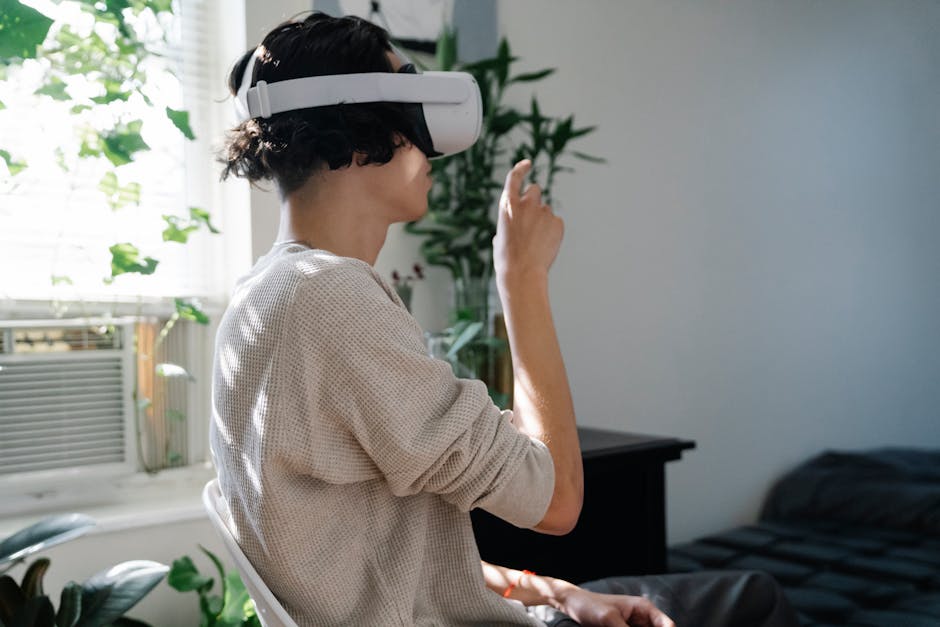Introduction: Rethinking How We Consume Content
Augmented Reality has officially outgrown its gamer hoodie. What was once a niche tool for entertainment is now steering the future of how we engage with media—everything from news to sports to scripted drama. AR’s arrival in mainstream media isn’t just hype; it’s function. It takes stale, one-way screens and turns them into interactive landscapes.
In 2024, the default isn’t just watching content—it’s experiencing it. Viewers don’t want to sit back; they want to reach in. Whether it’s overlaying live stats during a game or walking through a breaking-news scene in 3D, passive viewing feels outdated. This evolution isn’t a gimmick—it’s how audiences now build memory and connection with what they watch.
Media companies see the writing on the wall. They’re pouring cash, creativity, and engineering talent into AR not because it sounds cool, but because it holds attention. In a screen-saturated world, AR forces focus. That’s gold. The brands that figure out how to make AR not just accessible—but meaningful—are going to redefine the viewing experience moving forward.
Immersion > Attention
Flat screens make you a spectator. AR turns you into a participant. That’s the shift at the core of how augmented reality is changing media. When your environment plays a role in how you receive a story—when data appears next to the action instead of buried in a sidebar—engagement stops being passive. You’re not just watching anymore. You’re in it.
This matters because our brains are wired for spatial interaction. When you reach out and explore, your memory retention improves. Emotional connection runs deeper. AR leverages this by layering information in ways that don’t just inform—they immerse. For storytellers, it’s a new medium to play with: imagine showing a timeline that floats in space as you walk through a historical event or stats that update live around a player during a game. It’s not tech for tech’s sake—it’s about putting story elements where they matter.
Media is already running with this. News apps are letting users bring interactive infographics into their living rooms. Sports networks overlay real-time strategy diagrams and player metrics right into the field of view. You’re no longer flipping through feeds for context—it’s built into the moment. And that’s what makes AR powerful: it closes the gap between story and mind.
AR in Journalism, Film, and Live Events
AR isn’t just sprinkling filters on your view anymore—it’s dragging you inside the story. In journalism, immersive reporting is replacing flat video. Picture this: instead of watching footage of a war zone or protest, you walk through it in your living room. AR layers details—timelines, quotes, verified data—into real space, letting users experience context, not just consume headlines.
Cinema is shifting too. Augmented filmmaking doesn’t end when the credits roll. Directors are extending their stories beyond the screen with AR apps that let fans explore key scenes, character backstories, or alternate endings in their own space. It’s not marketing fluff either—it’s narrative.
And then there’s live entertainment. Watching a game or a concert from your couch? AR makes it feel front-row. Stats hover over players mid-match, song lyrics light up your walls, and background stories sync with what’s unfolding. The line between viewer and participant isn’t blurry anymore—it’s gone.
AR is building an active, layered media experience. Not someday. Now.
Customization and Control in the User’s Hands
Choose-Your-Own-Experience: Personalized Layers of Content
One of AR’s most powerful advantages is its ability to give control back to the viewer. Instead of passively consuming a single narrative, users can now customize what—and how—they see:
- Access alternate camera angles during live events
- Toggle extra layers of context or visual data in documentaries and news stories
- Dive deeper into character backgrounds and world-building in entertainment experiences
This dynamic, user-controlled environment creates a more intimate and engaging relationship between the audience and the content.
AR as an Accessibility Power Tool
Augmented reality isn’t just about enhancing the experience—it’s also becoming a critical tool for inclusive media.
- Real-time subtitles can be flawlessly overlaid in any environment
- Audio prompts can guide users through complex stories without needing to look at a screen
- Visual cues can adapt to individual user needs, enhancing clarity and comprehension
As AR integrates with assistive technologies, accessibility is no longer an afterthought—it’s a core feature.
The Rise of Spatial UX: Bridging Engagement and Environment
Spatial user experience (UX) transforms how users physically interact with digital content. With AR, media content no longer exists strictly within the frame of a screen—it can live in a room, wrap around a user’s field of vision, and even respond to physical gestures.
- Interfaces are increasingly location-aware and context-sensitive
- Media elements can be arranged around a viewer’s environment like virtual furniture
- Gesture and gaze tracking allow natural, hands-free control
As spatial UX evolves, it’s not just the story that matters—it’s how and where you experience it.
Media Companies Betting on AR
Streaming giants are no longer just flirting with augmented reality—they’re buying in.
Netflix has dipped into AR with interactive world-building tied to major releases. Think Stranger Things portals you can walk through or immersive crime scenes for their latest mystery series. Apple, never quiet when it comes to future-first tech, is going all-in with its Vision Pro headset. Early previews show entertainment tailored for spatial engagement, not just passive consumption. Picture binge-watching with characters that move around you, not just on a screen.
Then there’s Meta, throwing real weight behind AR as part of its immersive rebranding. With Horizon Worlds and cross-platform integration, they’re not just positioning AR as a feature but as a new standard. What used to be a gimmick for promos is becoming a launchpad for full AR-first series—written, shot, and designed to be experienced ambiently.
What matters more than who’s running ahead is how they’re making AR speak across ecosystems. New titles are being designed to sync with everything from your phone to your headset to your TV. We’re not just talking about neat effects—we’re talking about a fundamental rewire of content delivery. Traditional “watch and scroll” is giving way to “step in and explore.”
For context on how this arms race lines up with the broader battle for viewership, check out Streaming Services vs. Cable – The Battle for Viewership.
Challenges Ahead
For all its promise, AR media still has a hill to climb—and it’s steep in spots.
First up: hardware. Despite a surge in consumer interest, mass adoption is slow. AR headsets are still bulky, expensive, and not exactly plug-and-play. Glasses that feel like a part of daily life? We’re not quite there yet. Until the tech becomes seamless (and affordable), expect a bottleneck in reach and usability.
Then there’s cost. Creating immersive, interactive experiences isn’t cheap. Small teams can whip up short-form video or basic vlogs without much overhead. But AR? It demands 3D modelers, developers, and serious computing power. That creates a barrier not just for indie creators, but even for mid-sized media operations. The creative ceiling is real—for now.
And we can’t ignore the ethics. AR blurs lines between personal space and digital storytelling. Consent, data usage, and surveillance concerns come into play when devices start layering information over your real-world view. Creators and platforms alike will need clear policies on privacy and data handling. Without that, the trust gap widens.
Bottom line: AR is exciting, but it’s not frictionless. The gear needs to evolve, the production pipeline has to get leaner, and the ethical groundwork must be laid—before it all really scales.
What Comes Next
We’re not there yet—but we’re close. The road to mainstream AR viewership isn’t just about tech catching up. It’s about habits changing. More devices are AR-capable now than ever before. Glasses, headsets, even smartphones are building a foundation, but that’s the hardware. The real shift will come when people stop asking “why AR?” and start expecting media to meet them in 3D space.
The prediction? A full-on merge of physical and digital viewing. Think less about watching content on a screen and more about seeing it around you—interacting with a character while walking down the street or watching a live game with stats hovering in your living room. It won’t be just entertainment. Education, shopping, even social vlogging will tap into this blend of real and rendered.
This isn’t a temporary spike. It’s not a trend. It’s a crossfade. A transformation. The static, one-way feed of traditional media is giving way to something more dimensional, more personal—and creators who learn how to build for that world now will lead it when the merge becomes the norm.




